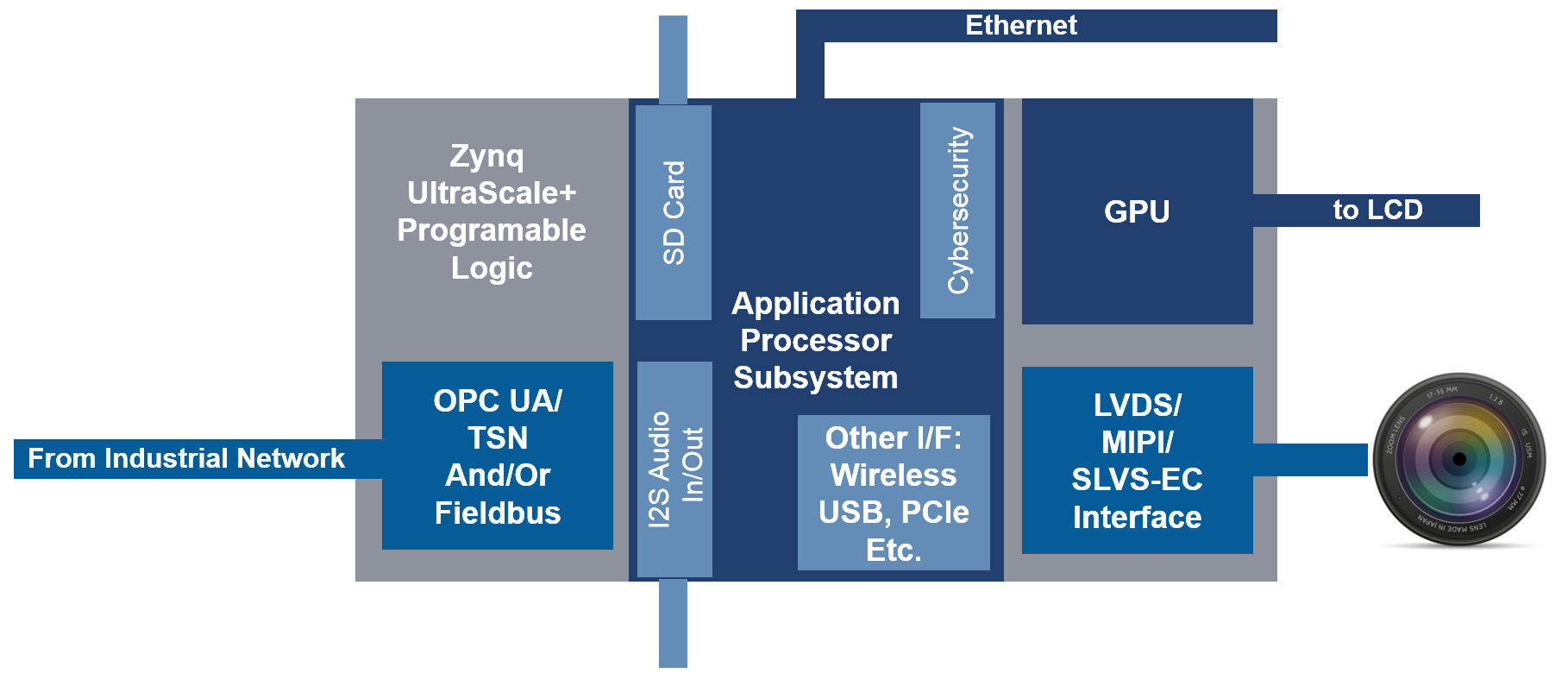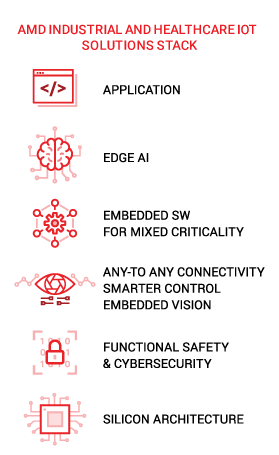- Applications
- Industrial
- Human Machine Interface
Human Machine Interface (HMI)
Maximize utility and user simplicity through versatile I/O, secured network compatibility, embedded analytics, accelerated graphics processing, scalable video codecs, and flexible display control with AMD SoCs & FPGAs
HMIs serve as the hub of information to and from users whether stationed on a factory floor, remote SCADA system, as part of handheld and wearable equipment, or integrated into any number or type of assets controlled by operators. Modern HMIs offer the capability to blend local and cloud data to provide clear insights into the process or task at hand, but with the rise of edge computing, there is a growing need for HMIs to evolve beyond a display and I/O tool toward supporting intelligent and interactive analysis of the data presented to it.
An AMD-based solution offers a long list of benefits for HMIs:
- Platform scalability from cost-constrained industrial displays to feature-rich and customized HMIs without compromise on IEC 62443 security, IEC 61508 SIL 3 safety, extended lifecycle, reliability over harsh environments, small power and physical footprint, or compatibility with enterprise-wide embedded software architectures
- AMD Adaptive SoCs support an extensive catalog of standard peripherals and Industrial Ethernet standards as well as OPC UA and DDS over traditional Ethernet or TSN
- All AMD devices offer ample flexible I/O with the capability to build interfaces for any sort of non-standard or proprietary requirements
- Displays (LCD, TFT, others) can be driven via a nominal single-channel controller scaling to a complex chain of graphics and video processing involving built-in accelerators, GPUs, H.264/265 codecs outputting multiple streams of graphics overlaid on high-resolution video
- PYNQ Framework for embedded analytics and machine learning with integrated web server
The AMD ecosystem includes leading companies that support traditional HMI features as well as emerging technologies such as augmented reality, voice recognition, and wireless industrial connectivity.
One partner, DiSTI, has experience with the embedded GPU in Zynq UltraScale+ using flagship product, GL Studio, which enables UI developers to build high fidelity, safety critical 2D and 3D graphics that enhance the level of reliability, interactivity, and sophistication needed for embedded UI applications - all while providing superior performance and visual quality. DiSTI is the leading expert and full service provider in the development of User Interface (UI) software for over 700 customers globally.
| Design Examples | Description | Device Support |
|---|---|---|
 Click to enlarge |
|
AMD adaptive SoCs Kria K26 SOM |
AMD devices leverage a host of high-quality IP built as hard-macros in the devices and through a wide IP ecosystem. The HMI solutions are supported with Plug and Play IP cores that are ready to be used on a different OS. The total system performance results in high-quality display outputs that facilitate rapid decision-making.

Some Industrial and Healthcare IoT products need all elements of the AMD IIoT and HcIoT Solutions Stack, all need some. The AMD IIoT and HcIoT Solutions Stack is comprised of optimized AMD and Ecosystem building blocks and solutions used across Industrial and Healthcare IoT platforms. Starting from scratch is never something you will have to do with a AMD-based Industrial or Healthcare IoT system. Minimize development time and cost and maximize design reuse on your next Industrial or Healthcare IoT platform by exploring the different elements of the AMD IIoT and HcIoT Solutions Stack.



